|
Yesterday we had our first go at making paper in our makeshift home studio. As many of you know last fall we moved from our home of 10 years in Portland, to a house in Oregon City. We had already been eyeing fixing up the space you see us working in as a home studio but never thought we'd need to be using it so soon.
A month ago we were busy with an open house, private workshops with teens and artists, prep for our spring workshop series, and plotting out production papermaking for a book project we are working on with c3:initiative. Everything seemed to be on track. Then things started to abruptly change. For those that are just getting to know us, we are a husband and wife team who operate a community hand papermaking studio. We began in fall 2012. Over the years we've been in 3 different studios, taught hundreds of students, worked with numerous artists, offered demos and sales at festivals and offsite locations, and rent our equipment and space for fellow makers to access. We had hoped that the studio would one day be our full time focus. After the first few years we realized that this would not be sustainable for many reasons. The past two years we have both had primary jobs outside of the studio that have brought us stability, personal growth and a steady income. This enabled us to focus on building the studio by doing things we wanted to do, rather than what we needed to do. Most of the time the studio is self sustaining, meaning that we bring in enough income to cover rent, materials, insurance, etc. We don't pay ourselves for the work we do at Pulp & Deckle. As the world has abruptly shifted, so have our lives. Gary was just laid off from his primary job, meaning our income has been reduced by half. It's a familiar story right now. We're grateful Jenn can work from home in her role as a Project Manager for the non-profit arts org c3:initiative. Without this income, and soon, unemployment for Gary, we would really be scrambling. Recently we realized that we were going to need to bring our studio home with us so we could continue making paper for the projects we have committed to. Oregon enacted a shelter in place order, and we are taking it very seriously. In the slideshow above you can see Gary making a cotton rag/abaca blend using denim fabric scraps and unbleached abaca fibers. Jenn is making iris paper from materials harvested in our yard. These papers will be part of an edition of books that c3:initiative received grant funding to make, commemorating the last five years of the papermaking residency program that we collaborate on together. We're making 360 pieces of paper for the project. The rainy conditions, allergies, and cold weather are making this a somewhat slow process, but we'll get there! Thank you to everyone who has signed up for workshops and has deferred their registration to future classes. We're hopeful we'll be back in our North Portland studio soon. Until then, if you can support our work we'd be forever grateful! Here are the ways you can do that.
Our commitment to process, hand making, and sharing the craft of paper is as strong as ever. Thank you for helping us keep going! It's a crazy and unpredictable moment in global history. Be kind to yourself and to others. There's no way to know what tomorrow might bring, but for today we can do what we need to to help ourselves and each other.
1 Comment
We find ourselves staring down the end of the calendar year, taking stock of this moment in time at the studio. It's been a year of change, growth and gratitude. Here's a look back.
Overall these experiences have felt grounding, yet with every step forward we've felt some nervousness around the financial impact of our growth. We've chosen to see it as an investment in what we can provide. As we look to what next year might bring we hope to continue building a community around the art and craft of papermaking. In January we're excited about the opening of the c3: Papermaking Residency exhibition that will feature the 4 artists we've worked with over this past summer. Be sure to visit c3's website for information about the exhibition and its associated programs. We'll also start reviewing applications for the next round of residency artists at the end of January, with the residencies occurring at our studio from May through August. We'll follow the same flow of workshop seasons in the spring and fall, and will fit in private workshops, membership rentals, demos in the community, and custom orders around the classes. In many ways we hope 2019 mirrors the ebb/flow of this year, creating a stable platform for our studio and for what we are able to offer. As we move into our sixth year of operations please consider making a gift to help us keep on top of studio improvements and general overhead. We have fiscal sponsorship via Fractured Atlas and you can make a gift to us via their website. We have a wish list of items we're hoping to purchase with donated funds, and that list is on our support page. And of course we would be happy to take a direct donation of items from our wishlist, just send us an email to discuss. Many thanks to everyone who has engaged with us this year!!! Your support and interest keeps the studio thriving. L O N G L I V E P A P E R M A K I N G! 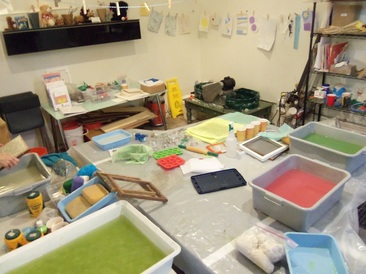 At the end of the year it seems everyone is taking stock of the past 12 months and thinking about what tomorrow will bring. More of the same? Something fresh? Likely a mix of both. We'll jump into the melee and share our recap of the year and what we are looking forward to in 2014. 2013 was the first full year of Pulp & Deckle being in existence. We honed our teaching skills, took a 5 week small business workshop via the PSU Business Outreach Program, particpated in 2 farmer's markets and 3 days of Art in the Pearl (doing demos), were vendors at the St. Johns Bizarre, competed in the Martha Stewart American Made Awards, were interviewed for a video currently on view at the Museum of Contemporary Craft, participated in Little Boxes, and hosted several open house/demo. events at the studio. It seems fitting that as the calendar year turns over we are pulping away at the studio, working on a custom order of 820 papers for a unique book project (more on that soon!). It's been a year of victories, firsts, failures and many, many learning opportunities. While we're not quite as far along as we had hoped we'd be in terms of being employed full-time by ourselves (we both still have day jobs to pay the bills), we do recognize what we've accomplished. We're still volunteering our time at the studio, and unfortunately did not qualify for a small business loan, but we're not going to let that keep us from charging ahead. 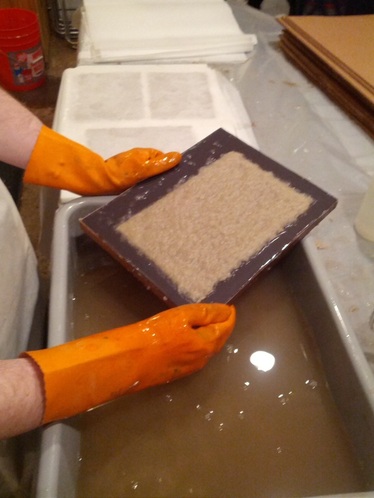 A few things that we're looking forward to in 2014 are giving a talk/demo./family activity at the Museum of the Oregon Territory in Feb., and teaching a watermarks workshop at Sitka Center for Art and Ecology in July. We're also excited to formally launch our line of custom wedding goods (designs coming in late Jan.) As we look to the new year, we're honing our business plan to identify the kinds of partnerships and programs we'd like to develop. Our studio is dedicated to the creation, promotion and preservation of the handmade papermaking process. As such we'd like to put more of an emphasis on developing community engagement projects that connect people with handmade paper in a meaningful way. We've got an idea cooking for a Valentine's Day related project (details coming soon!), and are also looking at ways we can have drop-in workshop nights. We'd love to do more demo. gigs, and teach workshops (and take workshops!) around the globe (so get in touch if you have a collaboration you'd like to do with us). And we will be placing an emphasis on creating papers from locally harvested plants like iris leaves, sitka spruce bark, gladiola stalks, cattails, and crocosmia, just to name a few. There's a lot of room to grow and learn and we welcome the new year with open arms! Happy New Year! See you on the other side. 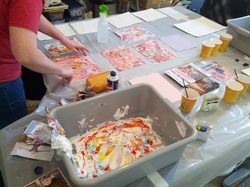 One of the workshops we enjoy offering is paper marbling. The art of marbling paper is the process of dripping various colors of ink or thinned paint onto a liquid surface. The earliest type of marbling started in 12th century Japan and is called Suminagashi, which means "spilled ink." India, Persia, and Turkey began using marbling techniques in their decorative arts in the 15th century. It wasn't until the 17th century that European artists began to marble. In our marbling workshop we like to focus on two very different techniques. We start with a process involving shaving cream, food coloring, and our 100% post-consumer waste recycled papers. This is a really messy and fun way to marble that you can learn to do at home (if you dare!) Once we have everyone smelling thoroughly like a barber shop, we move on to Suminagashi. We use bottled inks to drop colors onto a water and methocel mixture, creating patterns that we carefully transfer onto our handmade cotton rag papers. At the conclusion of the class students end up with a totally unique, one-of-a-kind mix of marbled papers that they can use to make cards, art, books, etc. In addition to our regularly scheduled marbling classes, we'd love to teach some private group, or individual marbling workshops. Drop us a line at our email to discuss the possibilities. The gallery below features photos from our last round of paper marbling. Enjoy! 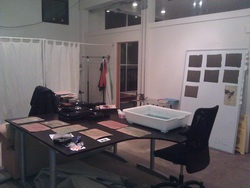 ...a papermaking studio! Since our last post we've made some progress, and still have a last minute home stretch to get the studio up and running at full capacity. Our Mark Lander Hollander "Critter" Beater arrived- and she's a beaut! After getting an electrically savvy friend to help us wire up the motor (many thanks Alex!), and us wheeling the whole thing over to a local auto parts store to get the perfect fitting belt (the auto parts salesman was confused but amused), we fired up the Critter this past week with great success! Below is a video of our first batch of pulp in the Critter. We beat cardboard and recycled paper junkmail for about 6 hours. The photo of Jenn below shows the first sheets of paper from the batch as it's air drying. Due to its thickness, and our current lack of a press, it's taking a few days for the papers to dry. We'll be making these papers into postcards for some of our Kickstarter backers. 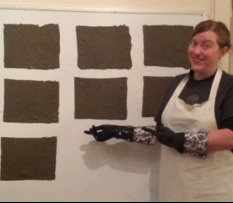 These will become postcards That brings us to this coming Fri. when our 12-ton Aardvark Press will arrive from Carriage House Paper in Brooklyn, NY, along with some highly anticipated supplies like pulp pigments, pulp fibers (kozo and bamboo!), formation aid, etc. Once the press is here it will greatly assist in our ability to produce larger, more consistent runs of papers. We're also anticipating the arrival of blotters and double walled cardboard sheets for the restraint drying box we built last weekend. With the beater, press, and drying box in place, we'll be papering up a storm! 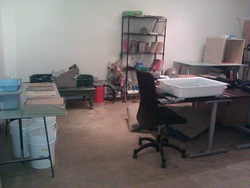 Another view of the studio set-up in progress. On Sat. Dec. 1st we'll hold our first workshop. We're super excited (and a little nervous honestly), for our Papermaking for Kids! class. We have 1 student registered so far, and would love to have some others join in on the fun. So if you know any kids aged 6-10 that like to get crafty and messy, send them our way. Click here for more info. on upcoming workshops and to sign-up. Also, look what we picked up this past week- our TEAM PAPER shirts for Kickstarter backers! They look so great, and it was a great experience working with the local screenprinting company, Little Red Press. We'll be sending out the shirts in the coming weeks as we package them up with other rewards, like buttons and postcards. For those Kickstarter backers that chose seed papers as rewards, our production schedule is a little backed up and we will likely not be mailing them out until Jan. 2013. If you were hoping to have your seed papers to give as gifts during Dec. please shoot us an email at studio@pulpanddeckle.com so we can put a rush on your order. Thanks for everyone's understanding and patience, and our apologies for the delay! Making 285 sheets of seed paper of various colors with varied seeds, takes a bit of time. And for anyone wondering about the glue we found on the floor of the studio after taking up the carpet, after doing some experimenting and cleaning, it looks like over time the glue will take care of itself because it is water soluble. As the floor of the studio gets wet while we're working, we can squeegee the glue up bit by bit. We'll also be using anti-fatigue mats in areas where we and our students are working, and this should keep things comfortable for everyone. If you want to stay up to date on our latest classes, events, products, and when we'll have our Grand Opening Party (date TBD), sign-up for our monthly "Paper Free Paper Notes" email newsletter. That about brings us up to date! Here's a link to our most recent press release that we'd love for you to share far and wide so we can get the word out about our workshops. After we wrap up production of our kickstarter rewards we'll start working on products for our online retail store. Any special requests?
P.S.- the paper lamb we worked on in our last post was a bust. I think we missed a couple of important steps in the process to keep the paper in a solid shape. We'll play around some more with sculptural projects like this and report back! |
The StudioPulp & Deckle is a handmade papermaking studio located in Oregon. Archives
September 2023
Categories
All
|
||||||

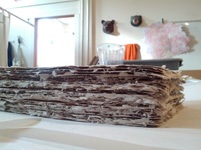
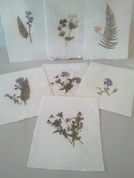
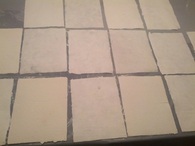

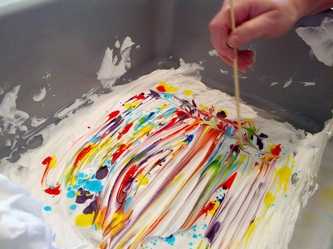
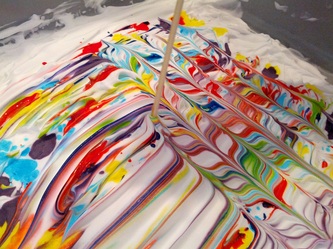
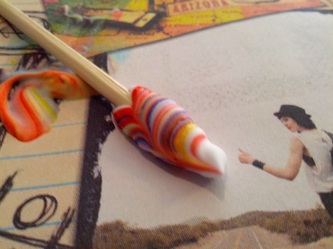
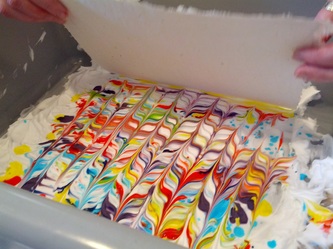
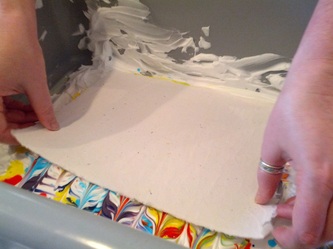
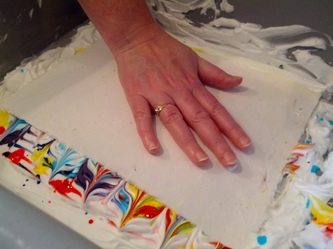
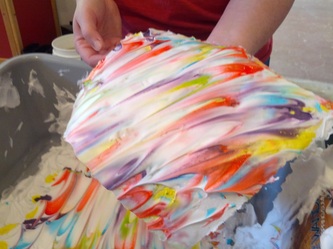

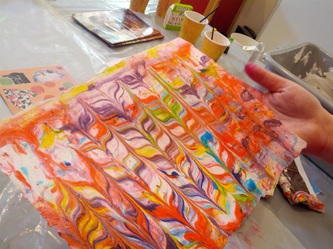

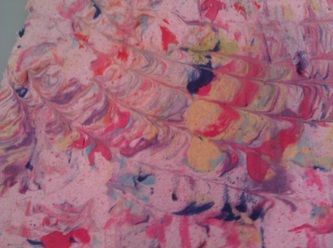
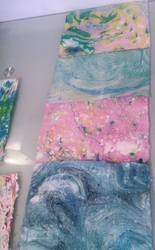
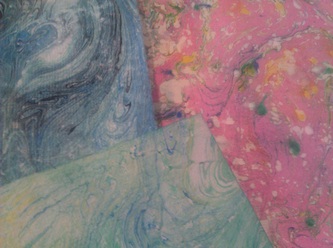
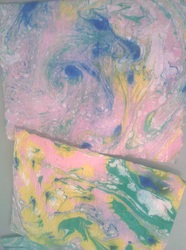
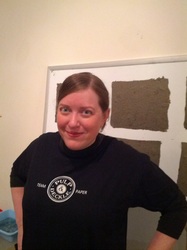
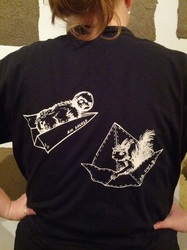
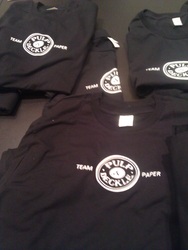
 RSS Feed
RSS Feed